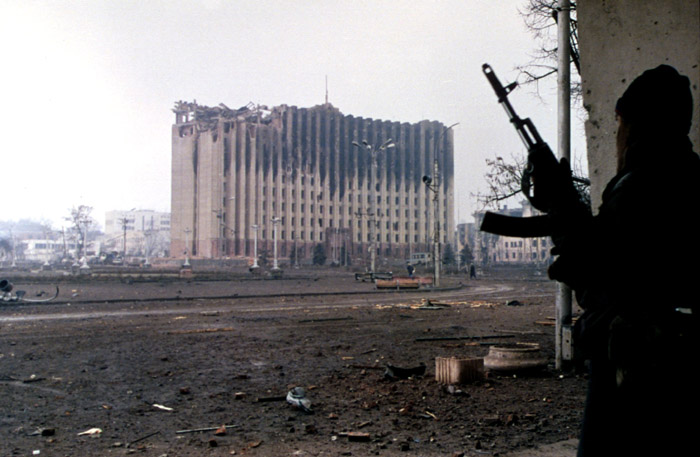Threading the Needle in Security Council Resolution 2249
On November 20, the Security Council adopted Resolution 2249, condemning ISIS’s recent attacks and exhorting all states to prevent and suppress the group’s terrorist activities. The Resolution is in some ways a predictable response to recent developments, but it contains one interesting provision that is worth parsing from an international law perspective.
Operative Paragraph 5 (OP5) reads as follows:
Published by The Lawfare Institute
in Cooperation With

On November 20, the Security Council adopted Resolution 2249, condemning ISIS’s recent attacks and exhorting all states to prevent and suppress the group’s terrorist activities. The Resolution is in some ways a predictable response to recent developments, but it contains one interesting provision that is worth parsing from an international law perspective.
Operative Paragraph 5 (OP5) reads as follows:
5. Calls upon Member States that have the capacity to do so to take all necessary measures, in compliance with international law, in particular with the United Nations Charter, as well as international human rights, refugee and humanitarian law, on the territory under the control of ISIL also known as Da’esh, in Syria and Iraq, to redouble and coordinate their efforts to prevent and suppress terrorist acts committed specifically by ISIL also known as Da’esh as well as ANF, and all other individuals, groups, undertakings, and entities associated with Al-Qaida, and other terrorist groups, as designated by the United Nations Security Council, and as may further be agreed by the International Syria Support Group (ISSG) and endorsed by the UN Security Council, pursuant to the statement of the International Syria Support Group (ISSG) of 14 November, and to eradicate the safe haven they have established over significant parts of Iraq and Syria;
Dapo Akande and Marko Milanovic have an excellent analysis of this provision on EJILTalk! There, they note that this provision is unprecedented. Most UNSCRs that authorize force have several features: (1) they contain a preambular paragraph that specifically invokes Chapter VII; (2) they use the word “decides” as the active verb in the paragraph that authorizes force; and (3) they use the term “all necessary means” or “all necessary measures” as the code for force authorization. OP5 is a hybrid, because it lacks the first two features but contains the third – “all necessary measures.” As a result, Akande and Milanovic conclude—correctly, I believe—that OP5 likely is not intended to serve as a stand-alone authorization for using force against ISIS in Syria and Iraq.
What, then, is OP5 doing, and what does it signal about the international legal theories of states using or seeking to use force in Syria and Iraq? Akande and Milanovic argue that the paragraph is crafted to create constructive ambiguity. The paragraph would seem to forge a compromise between Russia and all other states currently using force in Syria. Russia is acting against ISIS in Syria with Assad’s consent, and asserts that other bases for using force in Syria are inconsistent with international law. The United States, France, Canada, Australia, Turkey, and other states are using force in Syria on a theory of collective self-defense of Iraq or of national self-defense or both. OP5 neither rejects nor accepts the legitimacy of any particular legal theory. Instead, it indicates approval for states to use force in Syria and Iraq as long as that force is consistent with the UN Charter. That allows states to continue to rely on their existing theories for using force—which each state asserts is consistent with the Charter—without having to resolve the legal dispute between Russia and the other states using force.
Note one potential twist here: If OP5 effectively acknowledges the legitimacy of both the consent and self-defense theories against ISIS in Syria, it also could be read to acknowledge the potential legitimacy of both theories as applied to Iraq. Thus, if Russia decided that ISIS in Iraq posed an imminent threat to Russia or that it had been behind the bombing of the Russian airliner last month, it arguably could use force in Iraq under a self-defense or unwilling or unable theory. However, given that Russia and Iraq appear to be working quite closely now, it seems unlikely that Russia would use force in Iraq without Iraq’s consent.
If UNSCR 2249 does not authorize force, then why did the French pursue it? The answer is politics. In particular, the UNSCR, which reflects clear multilateral concern about ISIS and commitment to fighting the group, may empower states such as the United Kingdom and Germany to begin to participate in military activity against ISIS. For example, news reports suggest that the UNSCR may sway UK parliamentarians who previously have been undecided about whether to vote in support of a UK military campaign.
In short, UNSCR 2249 may illustrate the soft power of Security Council Resolutions, even where those Resolutions do not formally authorize force. But OP5 might also portend a new blurring of the long-standing bright line between Chapter VII resolutions that authorize force and those that do not. So long as there is international consensus about the threat that ISIS poses, that blurring seems mostly salutary. But it could pose significant questions down the line, either about Resolution 2249 or about future resolutions that adopt this new approach.




.jpg?sfvrsn=d5e57b75_5)
